Wrist Pain on Top of the Wrist
Definition
Wrist pain on the top of the wrist can be a debilitating condition that hinders daily activities and affects the overall quality of life.
A pain restricted to the upper side of the wrist joint is referred to as “top-of-the-wrist pain.” The dorsal side of the wrist is the term used to describe this region. The pain might be acute, dull, throbbing, or achy, and its intensity can vary. Depending on the underlying cause, it may recur periodically or consistently.
With some easy at-home self-care, most hand and wrist pain instances will go away in a few days or weeks rather than being an indication of a significant or chronic issue.
Numerous ailments, such as certain forms of arthritis, can produce pain or other symptoms in the hands and wrists.
A complicated system of bones, ligaments, tendons, and nerves makes up the top of the wrist. Pain in this area can be caused by a number of ailments, such as sprains, strains, inflammation, fractures, or other traumas. Moreover, chronic illnesses such as arthritis or repetitive strain injuries can cause pain at the top of the wrist.
What is the structure of the hands and wrists?
Each hand and wrist is made up of 27 tiny bones. There are eight bones in your wrist. The thumb has two bones, while each digit has three. Your hand’s palm is made up of five bones that join the thumb and each finger to the wrist.
The hand and wrist are controlled by more than 30 muscles. These are located in your forearms, wrists, and hands.
Causes of wrist pain on top of the wrist
There are several reasons for wrist discomfort in the upper part of the wrist, therefore it’s critical to take into account your unique symptoms, any recent injuries, and your activities. I can provide you some general information, but… The following are some typical reasons why people get wrist pain in the upper arm:
Sprains or Strains: The wrist can get sprained or strained as a result of overuse or abrupt motions. Activities like lifting large objects or performing repetitive motions may cause this.
Tendonitis: Pain may arise from inflammation of the tendons encircling the wrist. A particular kind of tendinitis that affects the tendons on the thumb side of the wrist is called De Quervain’s tenosynovitis.
Carpal Tunnel Syndrome: Pain and discomfort on the upper wrist may result from compression of the median nerve as it travels through the carpal tunnel.
Ganglion Cyst: These are benign nodules that frequently form on the wrist tendons or joints. They could be uncomfortable or painful.
Fractures or Dislocations: A wrist trauma or injury may cause fractures or dislocations, which can cause pain in the upper part of the wrist.
Arthritis: Rheumatoid arthritis and osteoarthritis are two conditions that can wreak havoc on the wrist joints.
Repetitive strain injury (RSI): Typing and using a computer mouse are two examples of repetitive wrist actions that can cause RSI and wrist pain.
Gout or Other Systemic Conditions: Wrist discomfort can be a symptom of a number of illnesses, including gout and systemic inflammatory diseases.
Depending on the underlying reason, pain at the top of the wrist joint may present with a variety of indications and symptoms.
The following are typical indications and manifestations of wrist pain at the top:
The main symptom is discomfort, either constant or sporadic, on the dorsal (upper) side of the wrist. The discomfort could be achy, throbbing, dull, or severe.
Swelling: Swelling may be caused by inflammation in the tissues around the wrist joint or elsewhere. The afflicted area could feel sensitive to the touch or look puffed.
Limited Range of Motion: The inability to fully extend the wrist joint may coexist with wrist pain.
Weakness: Inflammation and pain may be contributing factors to the affected wrist’s weakness. Reduced grip strength is possible.
Bruising or Discolouration: Following trauma, such as a fracture or sprain to the wrist, there may be bruising or discolouration in the surrounding area of the injured area.
Warmth or Heat: The skin surrounding the affected area may feel warm to the touch if an inflammatory disease is present.
Numbness or Tingling: Nerve compression brought on by conditions such as carpal tunnel syndrome can result in numbness, tingling, or a “pins and needles” feeling in the hand and wrist.
Clicking or Popping Sounds: When moving the wrist, injuries or certain disorders, like problems with ligaments or tendons, may produce audible sounds.
Pain with Specific Movements: Certain wrist motions or actions, such as grasping, raising, or twisting, may cause or exacerbate pain.
It’s crucial to remember that these symptoms could change based on the precise reason behind the wrist pain. It’s best to get medical help if your symptoms are severe or persistent so that you can receive the right diagnosis and treatment. To identify the underlying cause of your pain, your healthcare practitioner may perform a physical examination, prescribe imaging tests, and have a look at your medical history.
Among the Uncommon Causes of Wrist Pain Are:
Infection in Tumors
compression of the cervical (neck) nerves
Avascular Necrosis: A carpal bone’s lack of blood supply
Risk factors
Anyone can experience wrist pain, regardless of their level of activity or inactivity. However, the risk could be raised by:
Participation in sports: Many activities, especially those involving impact or repetitive wrist stress, are associated with a high rate of wrist injuries. Football, bowling, golf, gymnastics, snowboarding, and tennis are a few examples of them.
Repetitive work: Almost any hand-and wrist-intensive activity, such as crocheting and hair cutting, can cause debilitating wrist pain if done repeatedly and with sufficient power.
Pregnancy, diabetes, obesity, rheumatoid arthritis, and gout are among the illnesses or conditions that can raise the risk of carpal tunnel syndrome.
When to visit a doctor
Pain in the hands and wrists frequently goes better with at-home treatments.
But, you’ll have to see your doctor for surgery if:
Your hands are stiff and swollen, especially in the morning, and these feelings don’t go away after 30 minutes. In addition to being swollen and stiff, your hands are warm and red. “If you have a high temperature, you may feel generally unwell.”
Your hands or fingers are tingling, numb, or weak. Your pain isn’t getting better after two weeks of treatment at home. It keeps getting worse. It keeps coming back. It keeps you from doing the things you usually do on a daily basis.
It’s crucial to get urgent medical attention, if:
You’re in so much pain that you think you may have broken a bone.
There was a snap, grinding, or popping sound when you damaged your hand or wrist, and you are unable to move your hand, wrist, or fingers normally. Any part of your hand, wrist, or fingers is an odd shape or color. You have lost the sensation in all or part of your hand.
Seeing a hand therapist may be beneficial if you experience persistent pain in your hands and wrists or if you have a particular condition that affects your hands and wrists. These medical practitioners specialize in treating pain that affect the wrist and hand. Your physician, the rheumatology department, or the orthopedic department may recommend one for you.
Occupational therapists are qualified medical specialists who can assist you if you’re experiencing problems performing daily duties. They can assist you in discovering different activities to do. Depending on your circumstances, you may be able to see one through Social Services or receive a referral to one from your general practitioner.
Diagnosis
During the physical exam, the physician may:
Check the wrist for tenderness, swelling or deformity
Ask the patient to move the wrist to check for a reduced in your range of motion
Check the grip strength and forearm strength
Imaging tests
Imaging examinations could consist of:
The most popular test for wrist pain is an X-ray-X-rays can detect osteoarthritis symptoms or bone fractures with very little radiation.
CT: This scan may identify fractures that are invisible on X-rays and offer more comprehensive pictures of the wrist’s bones.
MRI: This test creates finely detailed images of the bones and soft tissues by using radio waves and a strong magnetic field. Rather than using a whole-body MRI equipment, you might be able to place your arm within a smaller apparatus for a wrist MRI.
Ultrasound: This easy, non-invasive examination can be used to look for cysts, tendons, and ligaments.
Arthroscopy
You could require an arthroscopy if the results of your imaging test do not provide you enough information. An arthroscope, a device the size of a pencil, is inserted into the wrist during this surgery through a tiny skin incision. The device projects images onto a television monitor using a tiny camera and light. The gold standard for diagnosing persistent wrist pain is arthroscopy. Your physician may use an arthroscope to treat wrist issues in certain situations.
Nerve examinations
If your doctor suspects you may have carpal tunnel syndrome, they may do an EMG. The small electrical discharges that the muscles produce are measured by this test. Arthroscopy
You could require an arthroscopy if the results of your imaging test do not provide you enough information. An arthroscope, a device the size of a pencil, is inserted into the wrist during this surgery through a tiny skin incision.
The device projects images onto a television monitor using a tiny camera and light. The gold standard for diagnosing persistent wrist pain is arthroscopy. Your physician may use an arthroscope to treat wrist issues in certain situations.
Medical treatment
Drugs to reduce pain
These include non-steroidal anti-inflammatory medicines (NSAIDs), such as ibuprofen, and painkillers like paracetamol. You can apply NSAID gels on your hands and wrists. Alternatively, you can ingest pills. Combining gels and tablets should be done with caution to avoid taking too much since they both enter the bloodstream. You should carefully follow the instructions that come with any prescription, especially the ones regarding dosing. Speak with your physician or pharmacist if you have any questions or concerns.
Heat and ice
You can lessen pain and swelling by applying an ice pack to your hands and wrists. Use a packet of frozen peas that has been moist towel-wrapped. Avoid putting ice directly on your skin as this may cause irritation or burning. Ice can be applied multiple times a day for up to 20 minutes at a time.
Using heat may help ease the discomfort and stiffness in your hands. Some items, such wheat bags, can be heated in a microwave and are available from chemists. To protect your skin from burning, you might need to drape a cloth or tea towel over it.
Taking a warm bath or shower, or placing your hand and wrist on a hot water bottle with the cover on, could also offer some relief. A warm bowl of water can be a useful and calming place to move your hand around. If your hand or wrist is swollen or you just had an injury, avoid applying heat to it since this may exacerbate the condition.
Another type of heat therapy that can help with pain and stiffness is a wax bath. It’s a good idea to utilize one before engaging in hand exercises to maximize the benefits. Find out where to purchase one and get usage tips from your doctor, pharmacist, or hand therapist. Make sure you properly follow the directions and avoid overheating the wax.
If you have cuts or open sores, you shouldn’t use these. Throughout the day, alternating between ice and heat therapy could be beneficial. Ice helps minimize swelling and pain by slowing blood flow. Heat promotes blood flow, which may be beneficial if your hands are tense and your muscles are worn out. Moreover, heat aids in the healing of soft tissue injuries.
Using splints
The hand and wrist can be supported by wearing splints. While some are meant to be used throughout daily activities, others are meant to be used during sleep or relaxation. You can receive guidance from a hand therapist, physiotherapist, or occupational therapist regarding whether a splint could be beneficial, the best kind for you, and how to use it correctly.
Treatments for wrist pain on top of the wrist
Depending on what is causing the wrist pain, there are several treatment choices-
Carpal tunnel syndrome treatment options include:
Applying hot or cold compresses for 10 to 20 minutes at a time; taking anti-inflammatory or pain-relieving medications, like ibuprofen or naproxen; getting steroid injections; going through physical therapy; and, in extreme cases, undergoing surgery to repair the median nerve
Gout treatment options include:
consuming an anti-inflammatory drug, such as naproxen or ibuprofen; drinking lots of water to lower uric acid levels; reducing alcohol and high-fat foods;
taking the prescription drugs your doctor has prescribed to lower your body’s uric acid levels.
Treatment for ganglion cysts can include:
Putting on a splint to prevent the wrist from moving and allowing the cyst to drain
removing the cyst surgically
Treatment for Kienbock’s illness usually consists of:
keeping the wrist still
using painkillers, having surgery to repair blood flow to the wrist, and having arm bone elongation corrected
If you have suffered a wrist injury, you can facilitate recovery by:
Putting on a wrist splint, elevating and relaxing your wrist, and taking ibuprofen or acetaminophen, two mild pain relievers
reducing the swelling and pain by applying an ice pack to the affected area for a few minutes at a time.
See a physical therapist if you suffer from arthritis.
Physiotherapy exercises for wrist pain on top of the wrist
You can also perform some easy wrist exercises at home to assist in releasing the stiffness and tension if your wrists are just uncomfortable and achy from overusing them (like working on your computer for an extended period of time while seated).
Before beginning any wrist workouts, consult your doctor if you have been diagnosed with carpal tunnel syndrome or another ailment affecting your wrists.
Flexion and extension of the wrist
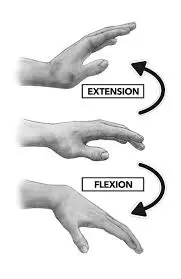
For this workout, place your forearm on a table and place a piece of cloth beneath your wrists for support. Put your hand facedown by turning your arm. Raise your hand until a slight strain is felt. Put it back where it was before and try again.
Pronation and supination of the wrist
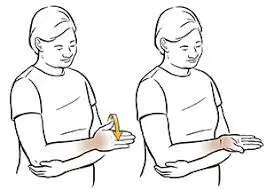
Maintain a sideways arm stance and a 90-degree bent elbow. Turn your forearm so that your hand is looking up, then the other way around so that it is facing down.
Deviation of the wrist
With your hand hanging off and padded under your wrist, place your forearm on a table. Thumb facing up, please. As though you’re waving, raise and lower your hand.
Farmer’s Walk
The farmer’s stroll is another excellent wrist-strengthening exercise. This is how you do it: Holding a pair of dumbbells or kettlebells with your palms facing in on either side of your body, take a tall stance.
Cover 50–100 feet on foot.
The farmer’s walk exercise is quick and easy to strengthen your core and increase your overall grip strength.3.
Play With Silly Putty
Lastly, playing with therapeutic putty, also known as therapy, will help strengthen the hand muscles that support your wrists. Use your fingers to roll, squeeze, and distribute the putty for a few minutes each day.
Using therapy putty can strengthen your fingers and grip.
Prayer stretch

Put your hands together in a prayer stance while you’re standing. Make sure the tips of your elbows meet. Place your hands in front of the face. Touching each other from the tips of your fingers to your elbows is the proper position for your arms.
Spread your elbows apart gradually while keeping your palms together. Lower your hands to waist height and perform this. When you feel the stretch or your hands are in front of your belly button, stop.
- Repeat after holding the stretch for ten to thirty seconds.
- Raise one arm to shoulder height in front of you.
- As you face the floor, keep your palm down.
- Your fingers should point downward when you release your wrist.
- Gently grab your fingers with your free hand and bring them back toward you today. Maintain for 10 to 30 seconds.
- Repeat both stretches with the opposite arm. A person should cycle through the stretches two or three times with each arm.
Clenched fists
Put your open hands, palms up, on your thighs while seated.
Gently clench your hands into fists. Avoid tensing up too much.
- Raise your fists off of your legs and back toward your body, bending at the wrists, with your forearms in contact with your legs.
- For ten seconds, hold.
- Slowly spread your fingers apart while lowering your fists.
- Ten times over, repeat.
Developing wrist and hand strength
Increasing your wrist strength might also help you stay injury-free. Whether you work from home or in an office, there are a number of workouts you may do to increase your strength.
Desk press
Put your palms faceup under a desk or table while you’re seated.
Firmly press your upper body on the desk’s base.
For five to ten seconds, hold.
Squeeze a tennis ball

Give a stress ball or tennis ball a firm five to ten-second squeeze.
This shouldn’t hurt. But it ought to help you strengthen your wrists.
Thumb work
Push exercise:
As though you were giving someone the thumbs up, make a fist and raise your thumb.
To stop your thumb from moving, use your hand muscles and thumb to provide resistance.
Using your free hand, gently draw back on your thumb.
Repeat while holding.
Pull- workout:
clench your hand and raise your thumb.
- Try to maintain your thumb pointing up toward the ceiling by applying resistance with your thumb and hand muscles.
- Gently push the thumb forward with your free hand.
- Repeat while holding.
- Hands and wrists with yoga
- Hand and wrist strength can be greatly enhanced by practicing yoga. Below is a list of some wrist and hand exercises that are inspired by yoga.
Figure eights
- Put your fingers in front of the body.
- permit the wrists to rotate fully so that each hand is alternately on top of the other.
- Perform this exercise for 15 to 20 seconds.
- Rest, and then repeat.
- While seated, lift your arms over the head and place the fingers with your palms together.
- Interlace your fingers and turn your palms upward, keeping your arms straight or slightly bent.
- Hold the stretch.
- Bring your arms down, and then repeat.
Overhead stretch
The hands and forearm muscles are stretched with this workout. It also improves circulation and suppleness.
Eagle-shaped arms
The Eagle position is the inspiration for this exercise.

- Reach your arms forward so they are parallel to the ground.
- With your right arm on top, cross your right arm over your left.
- Extend your elbows.
- Put your right elbow in the left’s crook. Your hands should be in contact on the backs.
- Swing your left arm left and your right arm right. Your left little finger should be passed by the thumb of your right hand. “Ensure that your palms are facing each other.”
- Extend your fingers, raise your elbows, and press your palms together. The ceiling is where they ought to be aimed.
Exercises To Avoid
It is important to rest your wrists as part of the healing process. While experiencing pain, avoid stretches that bend the wrist. It is important to rest your wrists as part of the healing process. While experiencing pain, avoid stretches that bend the wrist.
Stretches to avoid can involve:
- Downward dog
- Pushups
- Planks
- Burpees
- Bench presses
- Squats while cradling a barbell or free weights
- Bicep curls (with poor form)
Prevention
Although it is impossible to stop the unanticipated circumstances that frequently result in wrist injuries, the following simple advice may provide some protection:
Increasing bone strength Getting enough calcium can help reduce the risk of fractures. That equates to 1,000–1,200 mg per day for the majority of adults.
Prevent falls: The majority of wrist injuries are caused by falling forward into an outstretched hand. Put on appropriate footwear to assist in preventing falls.
Get rid of any hazards at home and brighten up your room. Additionally, if needed, add handrails on your stairs and grab bars in your bathroom.
Wear wrist guards when participating in high-risk sports like football, snowboarding, and rollerblading, and wear protective gear when engaging in athletic activities.
Consider ergonomics: Take frequent pauses from your keyboard if you spend a lot of time using it. It’s helpful to maintain a neutral wrist position during typing. This will help prevent strain or injury. A foam or gel wrist support and an ergonomic keyboard could be beneficial.
FAQ
What is the name for wrist ache on the top of my wrist?
Tendinitis is an inflammatory condition that affects the tendons in your body. Tendinitis, as opposed to carpal tunnel syndrome, usually affects the top side of the wrist.
When is wrist pain considered serious?
Consult a doctor if: pain in your wrist prevents you from performing typical tasks. The ache is growing worse or returning. After two weeks of home treatment, the pain has not improved.
What are the four tendonitis symptoms?
The following are the most prevalent tendinitis symptoms:
Pain at the tendon’s location and in the surrounding area….
Joint stiffness or trouble moving your joints.
When you move, you may hear and feel a cracking or popping sound.
Swelling that is frequently accompanied by skin discoloration (red to purple or darker than your natural skin tone).
What conditions induce wrist pain?
What are the different kinds of wrist injuries and disorders?
Carpal tunnel syndrome occurs when a nerve running from your forearm into your palm becomes compressed at the wrist.
Ganglion cysts are benign lumps or tumors that are not malignant.
Gout is a type of arthritis characterized by uric acid accumulation in the joints.
References
- Wrist pain – Symptoms and causes – Mayo Clinic. (2022, October 28). Mayo Clinic. https://www.mayoclinic.org/diseases-conditions/wrist-pain/symptoms-causes/syc-20366213
- Phillips, N. (2023b, February 1). Possible causes of wrist pain and treatment tips. Healthline. https://www.healthline.com/health/wrist-pain#treatment
- Hand and wrist pain. (n.d.). Versus Arthritis. https://versusarthritis.org/about-arthritis/conditions/hand-and-wrist-pain/
- Southern Pain & Neurological. (2022, November 16). Wrist pain: Causes & How to treat it. Southern Pain and Neurological. https://southernpainclinic.com/blog/wrist-pain-causes-how-to-treat-it/
- Andriakos, J. (2023, April 7). Wrist pain: Exercises, causes, and treatment. Health. https://www.health.com/fitness/wrist-pain-exercises
- The Healthline Editorial Team. (2019, May 14). Stretches for wrists and hands. Healthline. https://www.healthline.com/health/chronic-pain/wrist-and-hand-stretches#yoga

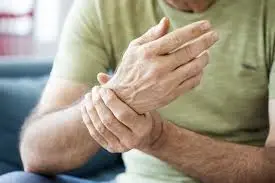
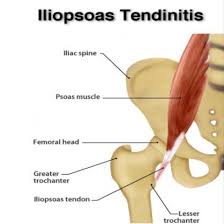
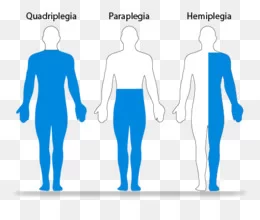

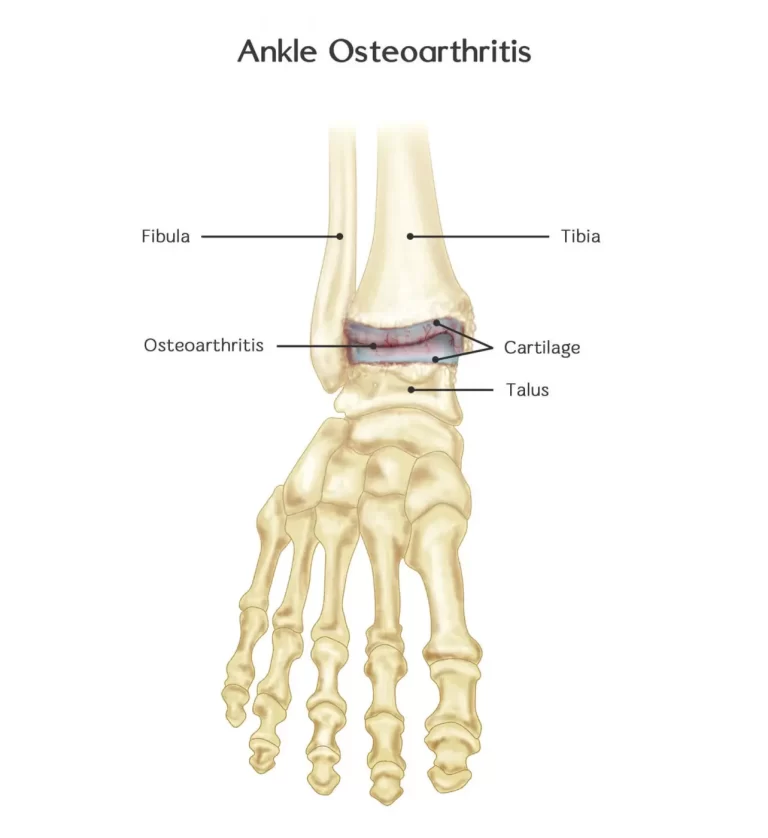


One Comment